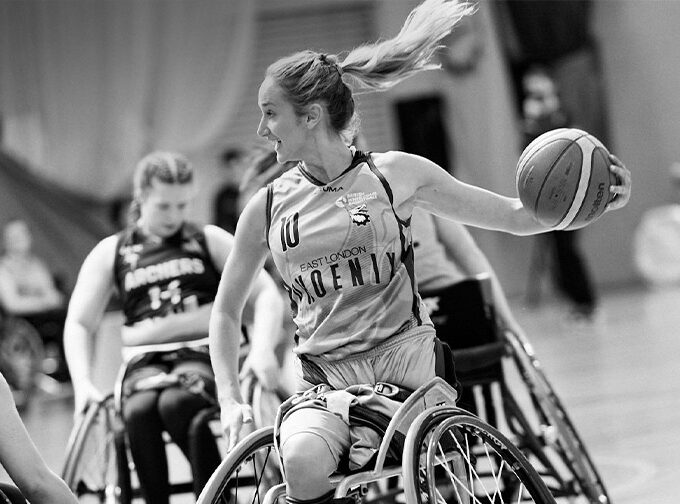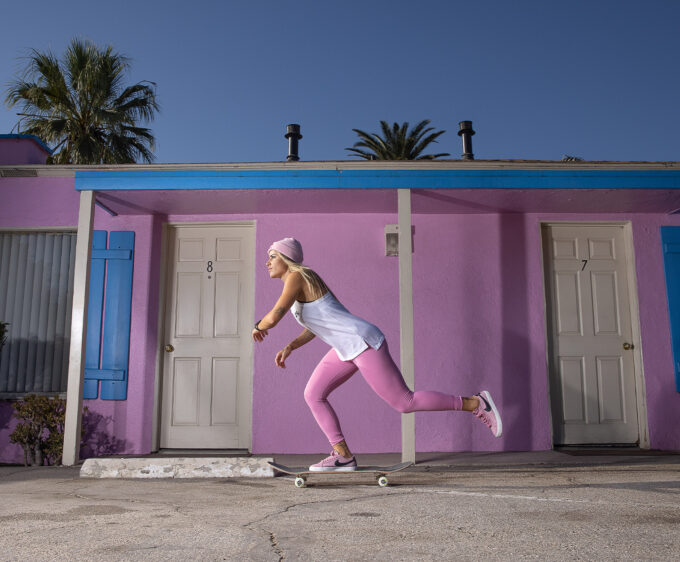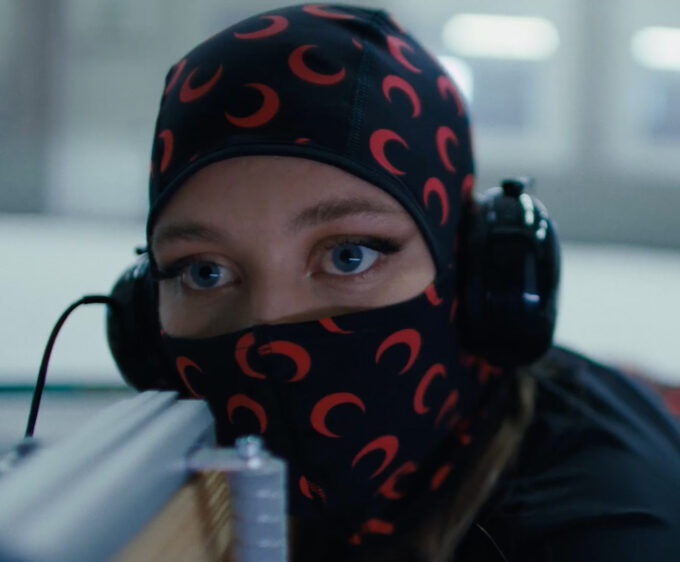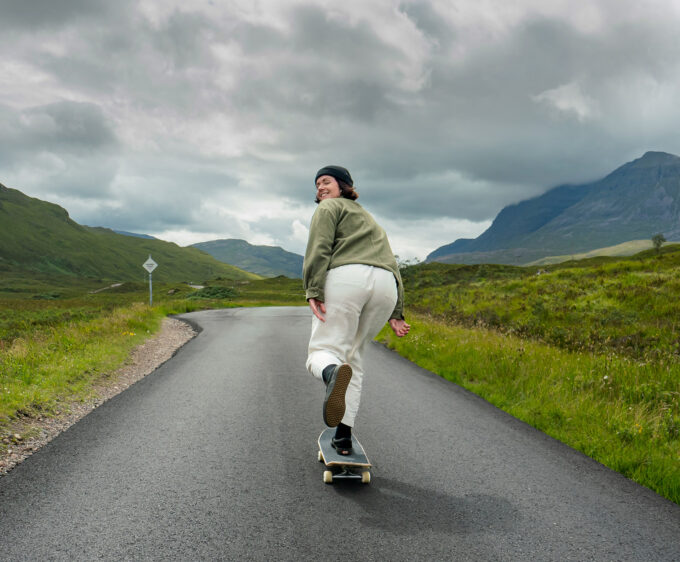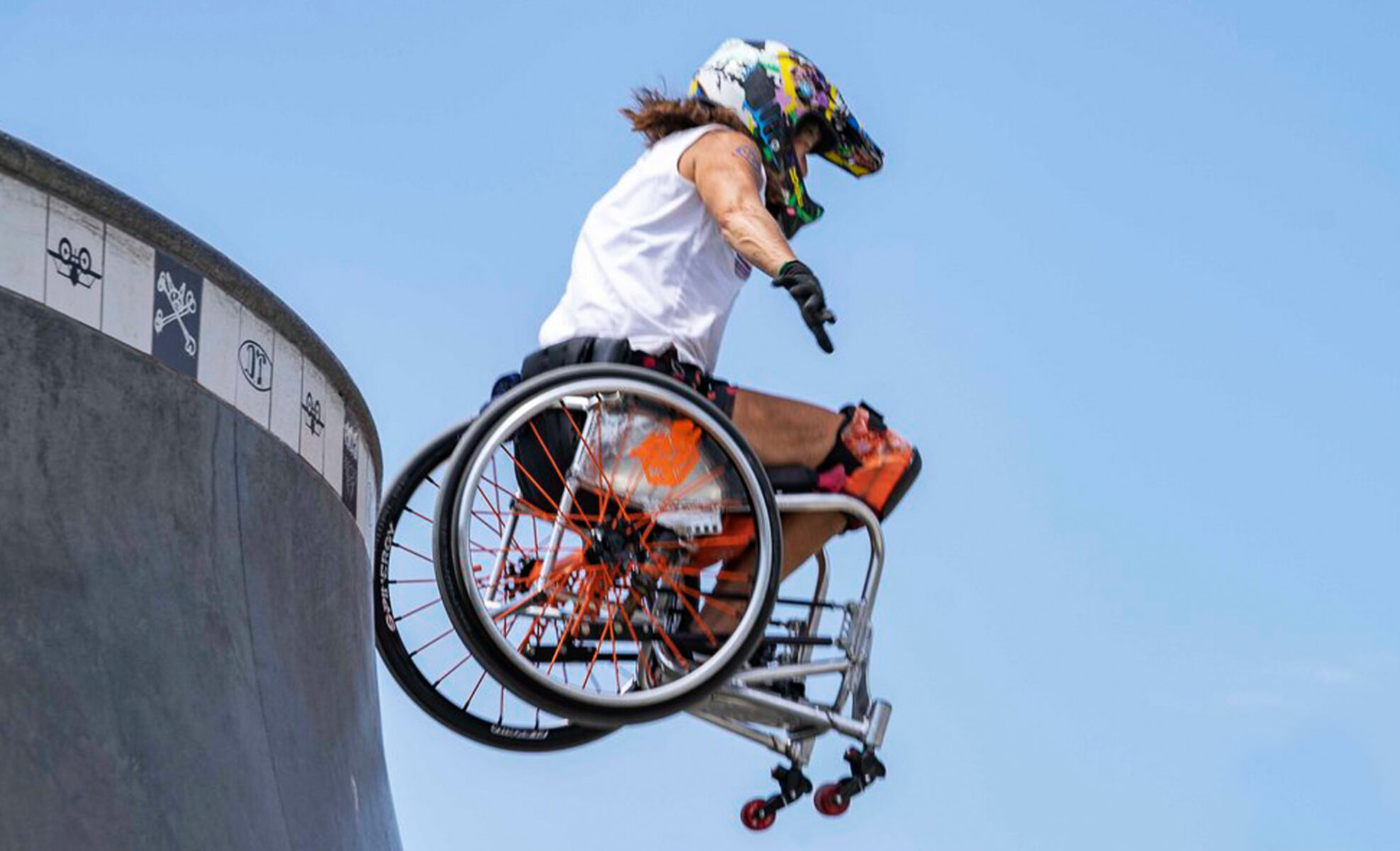
Dropping In With Tracie Garacochea
Tracie Garacochea is a force of nature. She’s a true trailblazer for adaptive sports and proof that whatever your age or disability, skateboarding is for everyone
By Glorious
Tracie Garacochea from Santa Monica in California was diagnosed with multiple sclerosis in her 40s, and as time went by she was no longer able to pursue her passion for sculpting and participate in the sports she loved. However, aged 55, while volunteering to help disabled kids, she joined them at an escape park where they were going to ride their wheelchairs. That day changed Tracie’s life. Now aged 62, she skates regularly, competes in WCMX championships (where wheelchair athletes perform tricks), and one of her dreams is to become a Paralympian.

Glorious: Did you play other sports before multiple sclerosis took hold?
Tracie Garacochea: I’ve always loved sports and even as a kid I could never decide on just one. I really love gymnastics and I did compete on a team, although I have to admit that I wasn’t the best, as I have no balance and I wasn’t very graceful. At an early age, I also discovered that I loved long-distance running and I carried that sport into my adulthood until I began tripping over things. In fact, when I look back, I was always tripping, but I know the reason for that now. When you can’t do something, you want to do it more, so as I can’t go for a long run nowadays, a marathon is the answer, so that’s what I do! I used to cycle a marathon in my recumbent trike until I was told that it was too much like a bike. The organiser said that I could race in a hand cycle or race chair, but unfortunately my body doesn’t like that sort of bike. Try explaining that to somebody who doesn’t understand different disabilities. I was then told that I could race in my everyday chair, so game on!
Glorious: You began skateboarding aged 55, so how did you get into the sport?
Tracie Garacochea: I got into capital WCMX, or skateboarding through volunteering at a cycling program for kids. The kids invited me to join them at an escape park where they were going to ride their wheelchairs. One of the women asked if I would like to try her chair and I said yes. The first thing that happened, I fell over backwards. I wiped myself down, got back up, went into the park and the rest is history. I never looked back, it was the time of my life. I had to wait to have a chair made, so I guess you could say that the day I had my wheelchair delivered is the same day that I started skating.
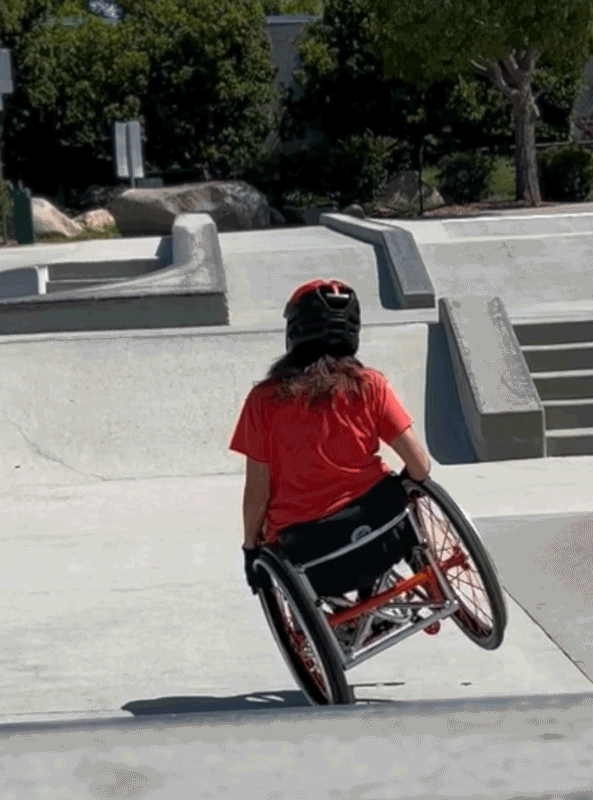
Glorious: Did you feel intimidated the first time you went to a skatepark?
Tracie Garacochea: I didn’t feel intimidated when I first arrived at the skatepark. I understood that people would be curious. I also felt that I needed to be able to help myself because that’s what I do, and I also didn’t want to look to strangers for help, I needed to earn their respect. I had a rope and some climbing accessories that I used as a pulley to get my chair out of the park. I now crawl out of the skatepark, pushing my chair, as I’ve become better accustomed to doing this.
Glorious: Can you remember the first time you dropped into a bowl, did anyone give you instructions or did you just go for it?
Tracie Garacochea: No, I don’t actually. I imagine I was terrified because I can’t really see the coping and I know I need to feel it, so it was probably pretty difficult for me. I did get some instructions but I teach someone to drop in differently. The way somebody talks to you about how to do something makes a huge difference. I would’ve liked a different set of instructions!
Glorious: Do you ever feel fear, and what advice would you give to others that might let fear overcome them?
Tracie Garacochea: Of course, I feel fear, but fear is there for a reason. I believe you give yourself a moment to think through your fear and justify it in your head. At the skatepark I usually show people how to look at their drop-in from a different perspective. I tell them to go to the bottom of the bowl and look up because it’s not as scary from the bottom as it is from the top. Looking at fear from a different perspective can help in any situation, as long as you don’t go straight into negative thinking.
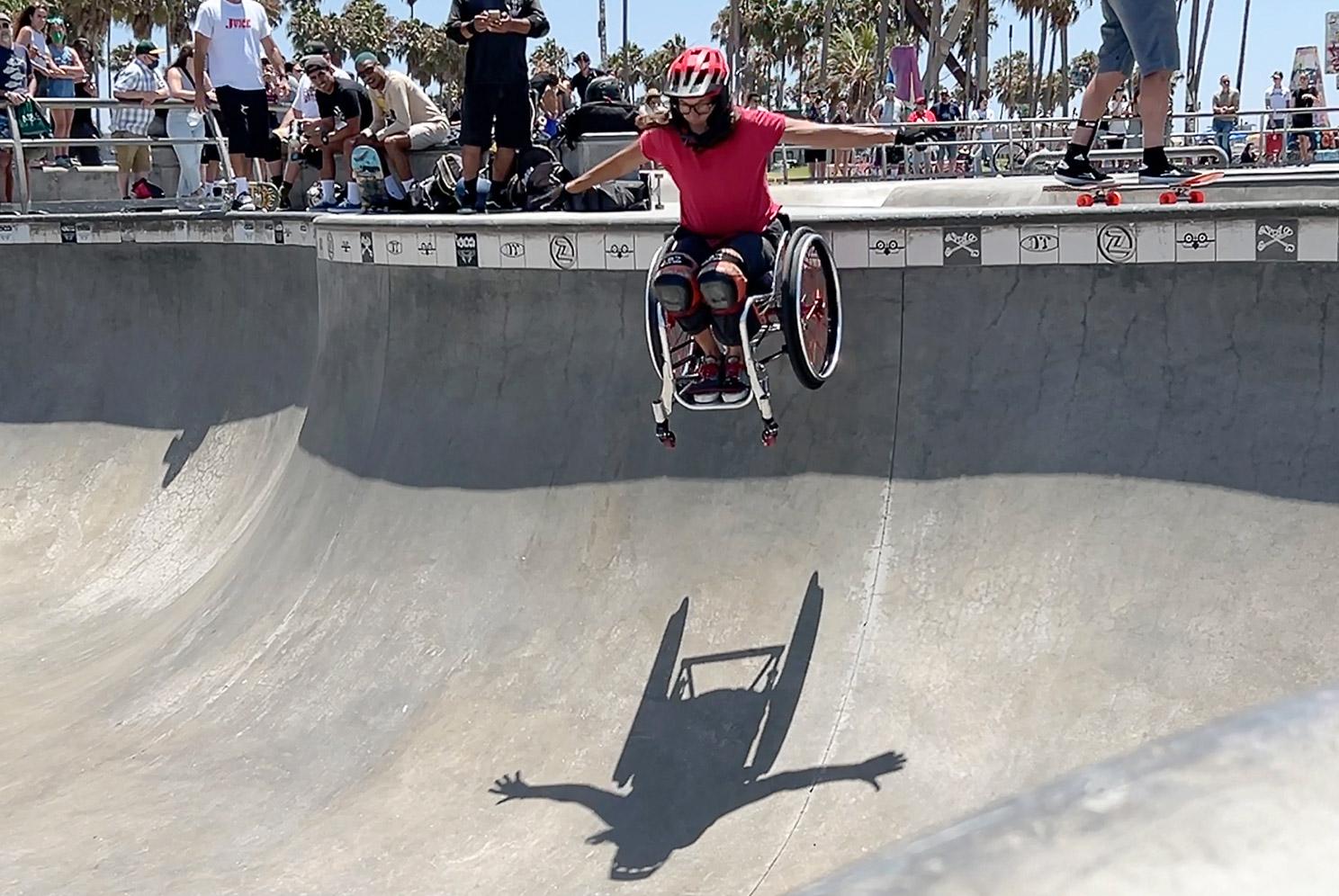
power

Glorious: How does skateboarding and your wheelchair make you feel compared to other sports you’ve played before?
Tracie Garacochea: My wheelchair is my superpower and I ask myself, “Why did it take me so long?” I waited until somebody explained to me that a wheelchair is a tool just as much as the cane that I relied on. I originally thought that a wheelchair would limit my life instead of having a positive effect. I was told by my doctor to walk, walk, walk! Walking was and still is painful. I used a cane, but moved incredibly slowly. But guess what? My wheelchair offered me freedom and a better life. My wheelchair has given me not only a fabulous sport, it’s led me to dream dreams and reach goals and achievements that I never thought that I could or would have. And a bigger bonus, I am part of a community that is phenomenal. I have friends that have my back at every turn and I am around the most supportive people I have ever met in my life. When I am in a skatepark I am like everyone else and that’s a beautiful feeling.
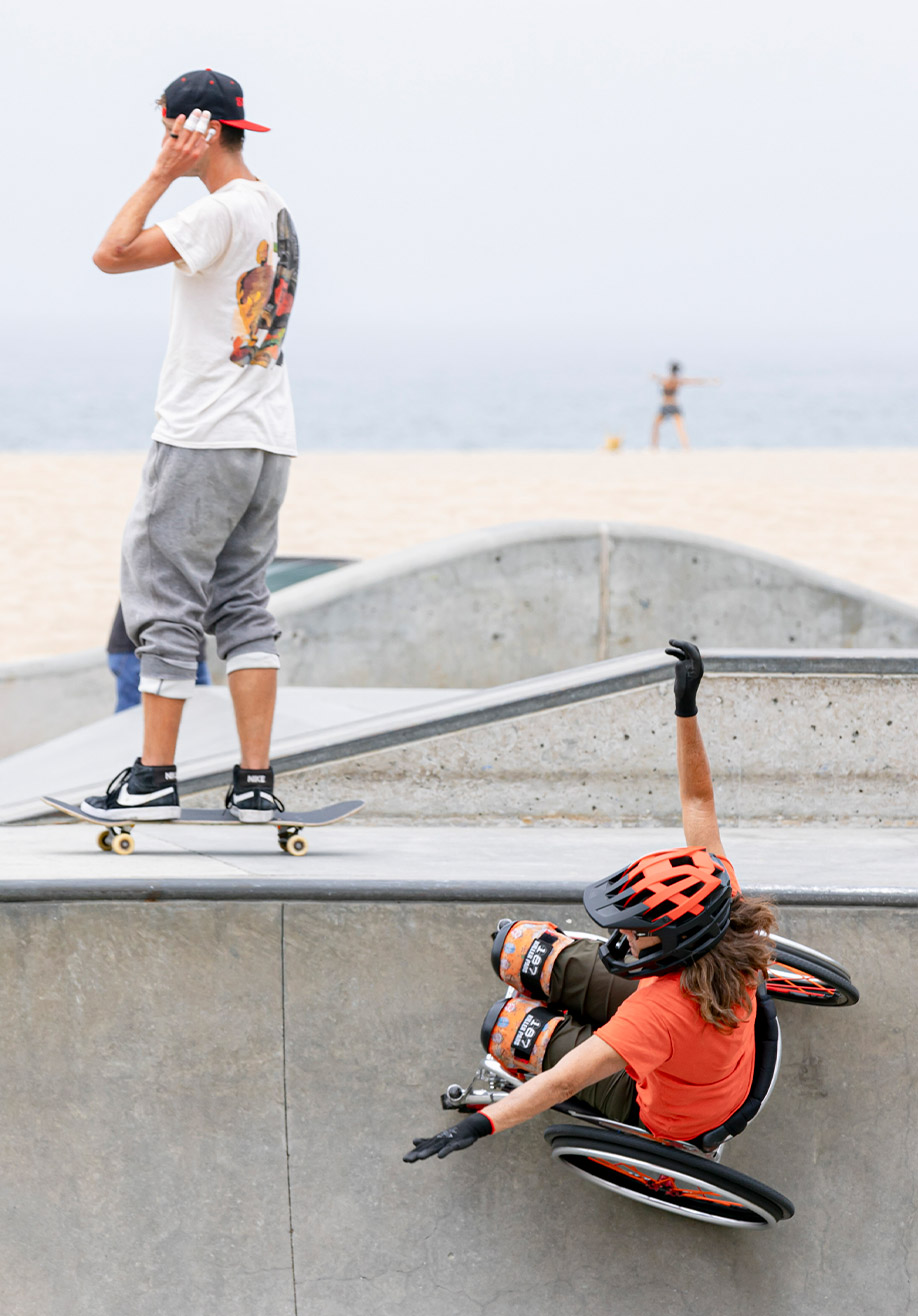
Glorious: How do you adopt such a positive outlook on life?
Tracie Garacochea: Having a positive outlook is a choice. Some days it’s not easy, but the alternative is not entertaining. There are three things that I do every day to keep me happy. The first is that I choose to be happy, the second is that I do something for somebody else, which can be as simple as giving a well-deserved compliment, or even randomly giving somebody a bunch of flowers. The third thing is that I feed my soul, meaning that I do something for myself. That could be going skating or I create some art, like taking photos. The other component to having a really happy and successful positive life is to volunteer. I have volunteered since I was a child. Giving your time is so important and it feels really good.
Glorious: Tell us about the skateboarding community.
Tracie Garacochea: The age group of the skateboarding community ranges from kids aged 6 to people my age, sometimes older. The community is so welcoming and most of us tend to look out for the young kids and make sure that they’re safe and out of harm’s way. There are some negative things that happen in the skatepark, but I choose not to dwell on that. At my home park in Venice, I always like to make people feel welcome, especially the kids, and I try to point out the flow of the park so we can skate safely.
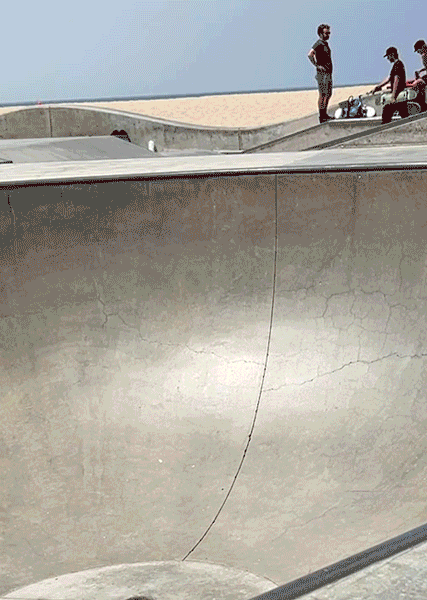
Glorious: Do you skate at different parks? If so, how do they compare?
Tracie Garacochea: When it’s hot I need to stay in cool areas so I’m currently staying closer to the beach, but I love going to different parks because they all offer something different for somebody who skates in a wheelchair. I don’t expect a perfect park where I can skate everything, but I love to find things in different parks that make it more interesting for me. I am not one to go out and scream that everything needs to be accessible, but if somebody were to make ledges a little bit wider so that my wheelchair could fit in on a half a quarter pipe I wouldn’t complain.
Glorious: Do other skateboarders ask for your advice/want to try out your chair?
Tracie Garacochea: Yes, people do want to try my chair and I let them if they can fit in it. They also need to promise not to drop in on anything because these wheelchairs are custom-made, fairly expensive and take about six months to make. I wouldn’t want to lose the use of mine! It’s great that people want to try my chair out so they know exactly what it’s like. I also like to point out that, unlike a regular wheelchair, my custom-made chair is not covered by insurance. For equality in life, it’s essential that disabled adults and kids have an opportunity to play sports, so it should be possible to insure these chairs.
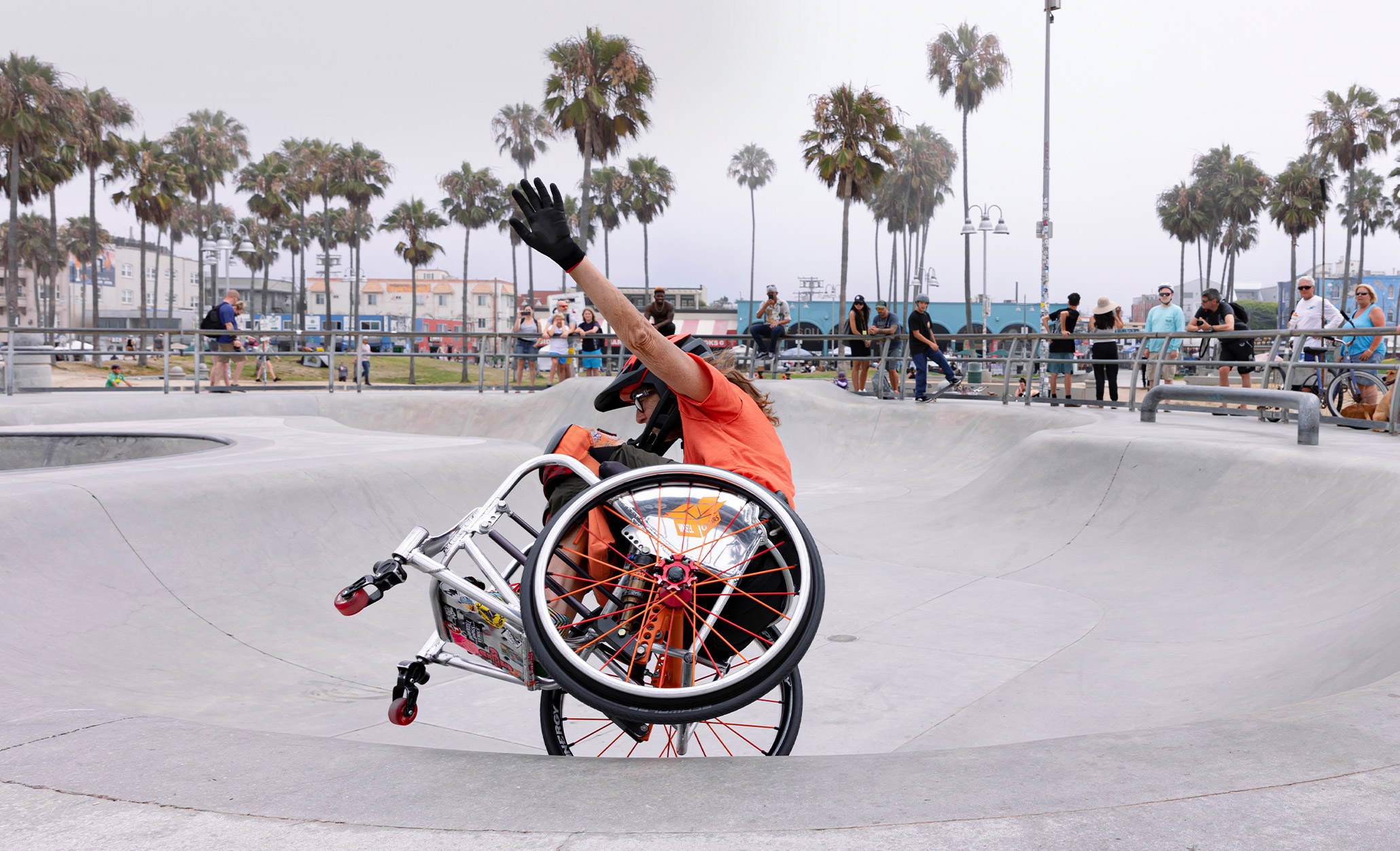
Glorious: Can you describe your best trick and how long did it take you to perfect it?
Tracie Garacochea: My best trick is not just a trick, but the style of how I skate. I was told at a competition that I had dropped into a bowl without using my hands. Without even knowing that I had done this, I asked if it was a bad thing, to which the guy replied, “No, that’s really good, keep doing it.” So I started doing most of my tricks without using my hands especially when I catch air. This is now my personal style, so I consider that my best trick. I am still perfecting it, especially when doing turns and other skills. Some people would consider my drop at the Venice Bowl deep end to be my best trick, but I don’t know!

Glorious: Have you suffered any bad injuries?
Tracie Garacochea: Yes. I was messing around on a painted metal ramp and I slipped and fractured my wrist. I didn’t know it at the time and I skated for a short while longer. I decided to do some adulting so had it x-rayed to find that it was fractured. I ended up having surgery, but was back skating in 6 weeks. I have also torn my shoulder a few times and I’ve broken some ribs, but did you know that you can skate with a broken rib?
Glorious: You now compete in WCMX championships. How do you train for these and what are your goals?
Tracie Garacochea: I skate every chance I get and I don’t specifically train for competitions. I don’t have a coach, I am pretty much self-trained. At the WCMX championships I skate in what is considered the women’s professional division. I am one of the top women in the US, and most likely the oldest person competing in WCMX. I want to compete for as long as I can, and my goal is to someday make the Paralympics. Another goal is to grow my sport, although I have done this already so I should make it a goal to attract a sponsor, as this will help with travelling costs to the championships.

Glorious: Have you and your family always been competitive?
Tracie Garacochea: My family was always competitive in sports. Everybody had their own sport, and usually they were at the top of their sport with the exception of me. Now is my time – better late than never.
Glorious: Would you like to try other adaptive sports?
Tracie Garacochea: I get very tired with multiple sclerosis and I don’t drive at night, so by about 4pm my body is done. There are sports I would love to try like downhill luge snow skiing, waterskiing, or dancing. I do make time to do my gardening and that is going to have to be enough.
Glorious: Is it your mission to encourage more women and children with disabilities to try skateboarding?
Tracie Garacochea: I would love to encourage more women and children with disabilities to try WCMX or adaptive skateboarding. There are so many sports out there for us now and the world is finally opening up for us. For the first time ever, Los Angeles has introduced adaptive programs for children and hopefully these will continue. There are so many organisations that offer help to the disabled, we just need to reach out and grab it! It is my joy to pass on any information I can to anyone I meet, whether it’s for them or for one of their friends to get sports equipment, become involved in a sport, or if they know of a child that needs to try a sport. It’s so important for our disabled children to play because this is how they learn. It’s even more important that we get these children durable wheelchairs so that they can go out and play and not worry about their wheelchairs falling apart. It’s almost criminal how insurance companies feel disabled children should have to live their lives.

Glorious: What is your skateboarding dream?
Tracie Garacochea: I have already mentioned making it to the Paralympics! My skateboarding dream also includes being sponsored. I’m not really sure what that means, but everybody keeps asking me if I’m sponsored! I would love to be in an advertisement while dropping off something big. The main reason for wanting to feature in an advertisement is that wheelchairs need to be out in public, as they have never been seen in this way before. I believe this would open up a huge avenue for disabled people in sports, especially in the skate world, showing more people that we can do extreme sports. We do skate. We skate the same, but we skate differently. And maybe skate in a mainstream skate contest!
Glorious: If you could invite four inspirational women to dinner, who would they be and why?
Tracie Garacochea: From my childhood, one of them would have to be gymnast Olga Corbett. Serena Williams because I love the way she runs her life. My skate bestie, Brooklyn Khoury, and my current mentor Cindy Whitehead.
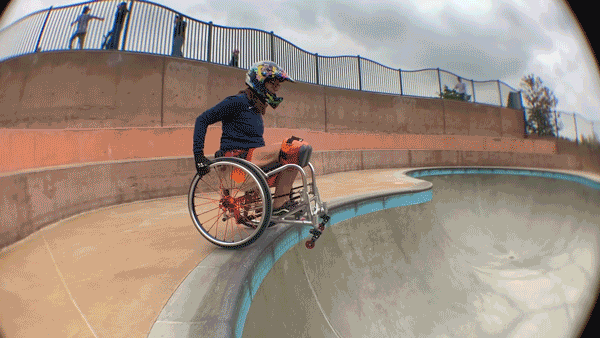
Editorial Design by this is root

